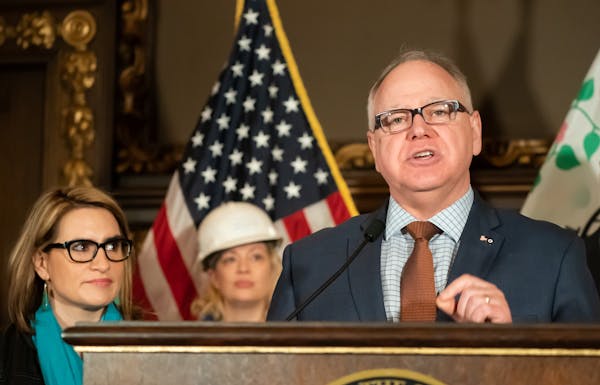Even after passing clean car rules last year, Minnesota lags in cleaning up carbon pollution from vehicle tailpipes, according to a state plan to reduce greenhouse gases.
Transportation, led by cars, trucks and SUVs, is the single biggest contributor to the heat-trapping pollution produced in Minnesota. The problem looms large over a Thursday discussion by a group of advocates, researchers and government officials to revise Minnesota's Climate Action Framework.
The framework, still in draft form, calls for transformations in how communities are planned, how land is farmed and how electricity is generated. The plan aims to reduce carbon emissions and make the state more resilient to a hotter and wetter climate.
Some suggested changes — proposed by work groups reviewing the plan — could lead to even more stringent goals, like phasing out the use of fossil fuels entirely in the state.
But one of the thorniest parts of the framework is how to move people between home, work and leisure without the pollution that comes from those fuels.
The framework calls for a 30% reduction in greenhouse gases in transportation by 2025 and 80% by 2050, in line with a 2007 state law. But the plan notes that reductions in emissions in the transportation sector have stalled for the past six years.
Along with electricity generation, transportation needs to be a main focus because "we already have the technology," said Peter Wagenius, legislative director for the North Star Chapter of Sierra Club.
"Investing in electric vehicle charging, investing in bus rapid transit, those should be the priorities," Wagenius said.
The main effort so far by Gov. Tim Walz's administration to reduce vehicle pollution has been controversial. Last year, Walz succeeded in passing clean car rules, though they won't go into effect until 2024 and the political fight over them led to the resignation of his top pollution regulator.
The rules mandate that more electric vehicles and plug-in hybrids are delivered to the state, but auto dealers have pushed back, filing a legal challenge in the state Court of Appeals last week.
Also included in the framework is an intention to "increase the use of clean fuels, including lower-carbon biofuels."
Brian Kletscher, the president of the industry group Minnesota Bio-Fuels Association, said that fuels like corn-based ethanol have to be included in future energy plans. He argued that new technology will reduce the carbon footprint of these fuels in the future.
"If we think we can get by without an all-of-the-above solution, we're fooling ourselves," Kletscher said.
On this point, there's significant disagreement. The group reviewing the transportation section of the plan suggested that biofuels should be used only where electrification is less feasible, like for heavy-duty vehicles. They also noted that some members felt these fuels could be used in existing vehicles and that "electrification should not be the only answer."
Wagenius, who is part of the transportation work group for the plan, said relying on these fuels was a misguided solution.
"Frankly, the Walz administration is out of date, and the climate plan should be an opportunity to let go of old ideas," Wagenius said, including a reliance on ethanol.
He also criticized the 80% emissions reduction goal for 2050 and said the state should aim to eliminate emissions entirely by then.
Darin Broton, a spokesman for the MPCA, acknowledged in a statement that the state isn't on track for the 80% reduction. He also wrote that "Ethanol is less carbon-intensive than gasoline and biofuels production technology continues to evolve."
At the same time, the state also has very little time to meet its 2025 goals. Broton acknowledged that Minnesota is not on track to hit that target, either.
Jessica Hellmann, a professor and director of the Institute on the Environment at the University of Minnesota, said that lofty goals are meant to inspire change. Any action to reduce carbon pollution is a good one, she said, even if it's not meeting targets.
But Hellmann added that the state's framework needs more specificity on what the state will actually do to get there, and what needs to happen first.
"You cannot take action without plans, but there's a point at which planning is insufficient to leading to the change we need to see at the pace we need to see it," she said. "Planning might not send a strong enough signal to the businesses and the industry."
The climate framework is planned to be completed by this summer.

Armed man shot during standoff with police outside Target in Woodbury
Long recovery ahead for 'gentle giant' burned in deadly Mpls. crash; driver charged
St. Paul man who fatally shot man in pickup, later shot another man gets 25 years

Prep Athletes of the Week: Pitcher and her team perfect together

